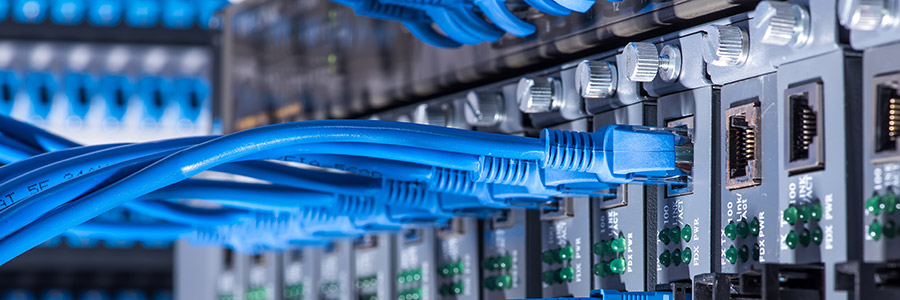
When it comes to data transmission, especially with Cat6 cables, what’s happening behind the scenes is a fascinating and complex dance of electrons. These electrons, responsible for carrying information across your network, need a clean, efficient path to travel through. If your cabling isn’t installed properly—if it's kinked, twisted, or messy—you could be limiting the performance of your entire network.
In this blog, we’ll dive into how electrons move through Cat6 cables and why maintaining neat, kink-free cabling is essential for reliable data transmission.
How Do Electrons Move in Cat6 Cables?
Cat6 cables are designed to carry high-speed data, supporting bandwidths of up to 250 MHz and speeds up to 10 Gbps over short distances. But how do they do this? It’s all about electrons.
-
Signal Transmission via Electrons
Data transmitted through Cat6 cables travels in the form of electrical signals. These signals are represented by the flow of electrons, which carry information in binary form (0s and 1s). The electrons move along the copper conductors inside the cable, following the twists in the wire pairs that are specifically designed to minimize interference and maintain signal integrity.
-
Twisted Pairs to Minimize Interference
Each Cat6 cable contains four twisted pairs of wires. These twists are not random. They are carefully engineered to reduce electromagnetic interference (EMI) and crosstalk between the pairs. Crosstalk occurs when signals from one wire interfere with another, causing signal degradation. The twisting helps ensure that the electrons travel along their intended paths without disrupting neighboring signals.
-
Propagation and Delay
As electrons travel through the cable, there’s a slight delay known as "propagation delay." This is a measure of how long it takes for the signal to move from one end of the cable to the other. The more consistent and stable the cable is, the less likely you’ll experience significant delays. This is where cable quality and installation practices come into play.
Why Neat, Kink-Free Cabling is Essential
A lot of people underestimate the importance of how their cables are installed. After all, if the electrons are moving through the wires, does it really matter if the cables are twisted, bent, or kinked? The answer is a resounding yes.
-
Signal Degradation
Kinks and bends in a Cat6 cable can disrupt the flow of electrons, leading to signal degradation. When a cable is bent too sharply, the geometry of the twisted pairs inside the cable changes. This results in an imbalance in the electrical characteristics, which can cause an increase in crosstalk and EMI, degrading the signal. A degraded signal means slower speeds, data errors, and potential packet loss.
-
Reduced Bandwidth and Speed
Cat6 cables are built to handle high-speed data transmission, but if the cable is improperly installed or damaged by kinks, it won’t perform as designed. The twisted pair structure ensures minimal interference at higher frequencies, but any disruption to this structure can limit the cable's ability to handle its full bandwidth. This can slow down your network and compromise performance, especially in high-demand environments.
-
Increased Attenuation
Attenuation refers to the loss of signal strength as the signal travels through the cable. Poorly managed cables—especially those with sharp bends or kinks—have higher attenuation rates. The more signal strength you lose, the less reliable your network becomes. This can lead to weaker connections, slower data transfer rates, and the need for retransmissions, which clog the network.
-
Stress on the Cable
Physical stress caused by tight bends or kinks can damage the copper conductors inside the cable, impacting the flow of electrons. Over time, this can lead to internal fractures or breaks, which cause intermittent connection issues or even complete signal loss. Keeping your cables neatly arranged ensures that there’s no undue stress on the wires, preserving their longevity and reliability.
-
Better Cooling and Airflow
A neat cabling structure isn’t just about aesthetics; it also plays a role in maintaining proper airflow in data centers or network closets. When cables are bundled together in a tangled mess, they can block airflow, leading to overheating. Excess heat can cause further degradation of the cable’s performance and the network equipment itself. Keeping cables organized allows for better cooling, improving the overall performance and lifespan of your infrastructure.
Best Practices for Neat, Kink-Free Cabling
-
Avoid Sharp Bends
When running Cat6 cables, make sure to follow the manufacturer’s bend radius guidelines, typically around four times the cable’s diameter. Avoid sharp bends or kinks, as they can permanently damage the internal structure of the cable.
-
Cable Management Tools
Use cable management solutions like Velcro straps, cable trays, and hooks to keep cables organized and neatly bundled. This will prevent the weight of the cables from causing kinks and make it easier to trace and manage them in the future.
-
Proper Termination
Ensure that your Cat6 cables are terminated properly. Any misalignment or loose connections can degrade signal quality and cause unnecessary crosstalk.
-
Labeling and Organization
Labeling your cables is another important step in keeping everything organized. It not only helps with future troubleshooting but also ensures that cables aren’t unnecessarily tugged or strained during network changes.
Conclusion
Electrons running through Cat6 cables are carrying vital information that keeps your network running smoothly. However, for them to do their job effectively, the cabling infrastructure must be properly maintained. Poor cabling practices—such as kinks, bends, or a messy setup—can have a direct impact on signal integrity, speed, and overall network reliability.
By keeping your cables neat, kink-free, and well-organized, you’re not just improving the aesthetics of your installation—you’re also maximizing the performance of your network and ensuring it functions reliably for years to come.
Make sure your cabling is done right from the start. Trust the science, and give those electrons the smooth ride they need!

Leave a comment!